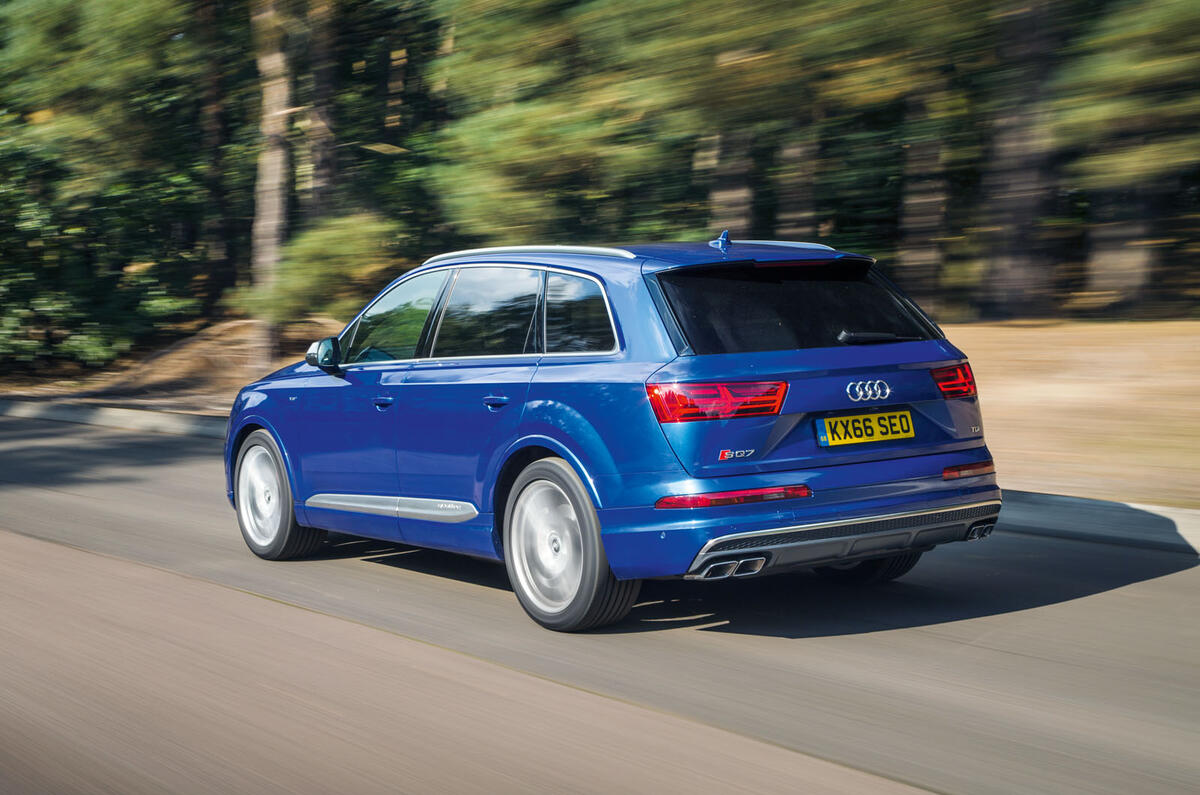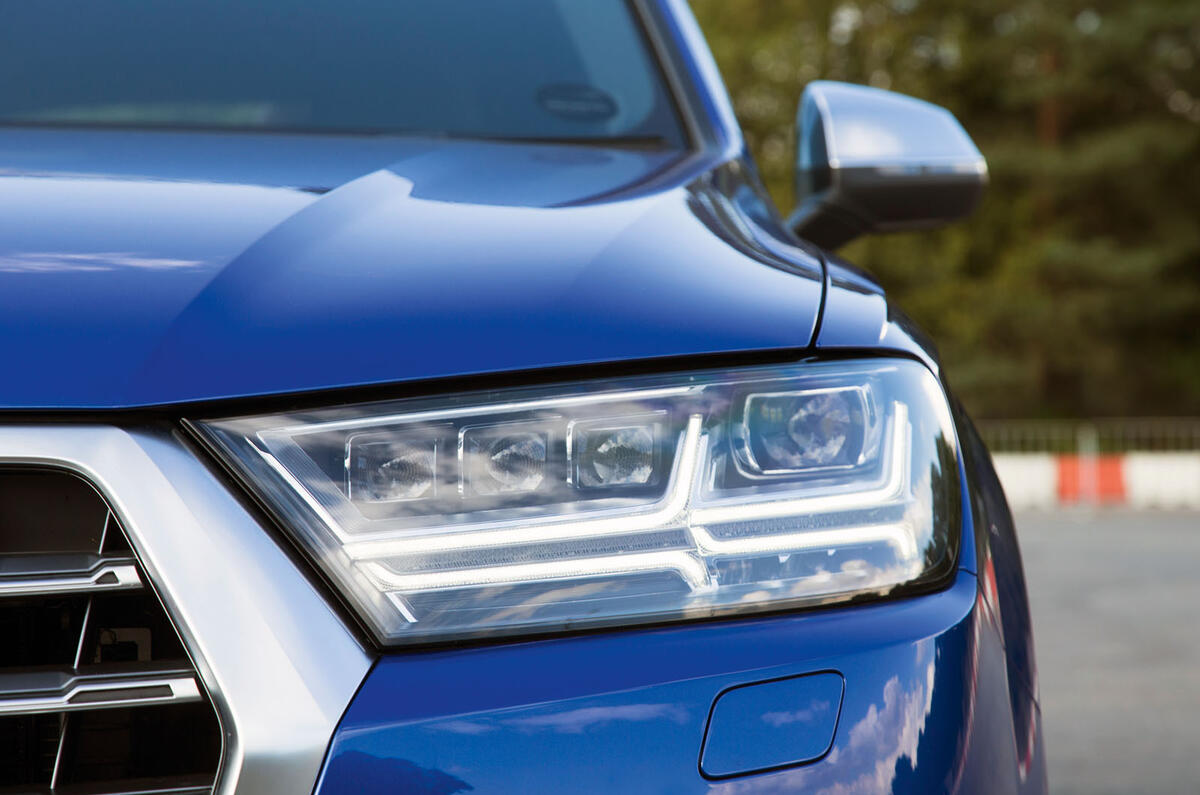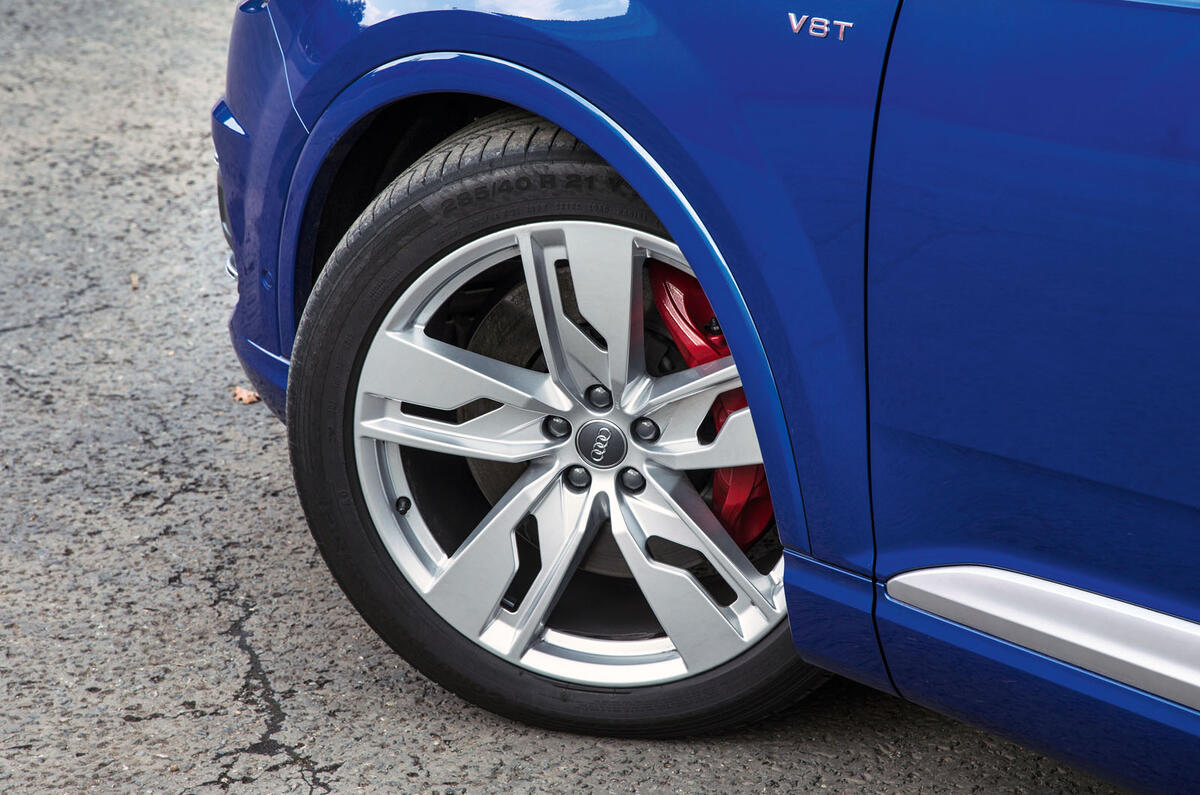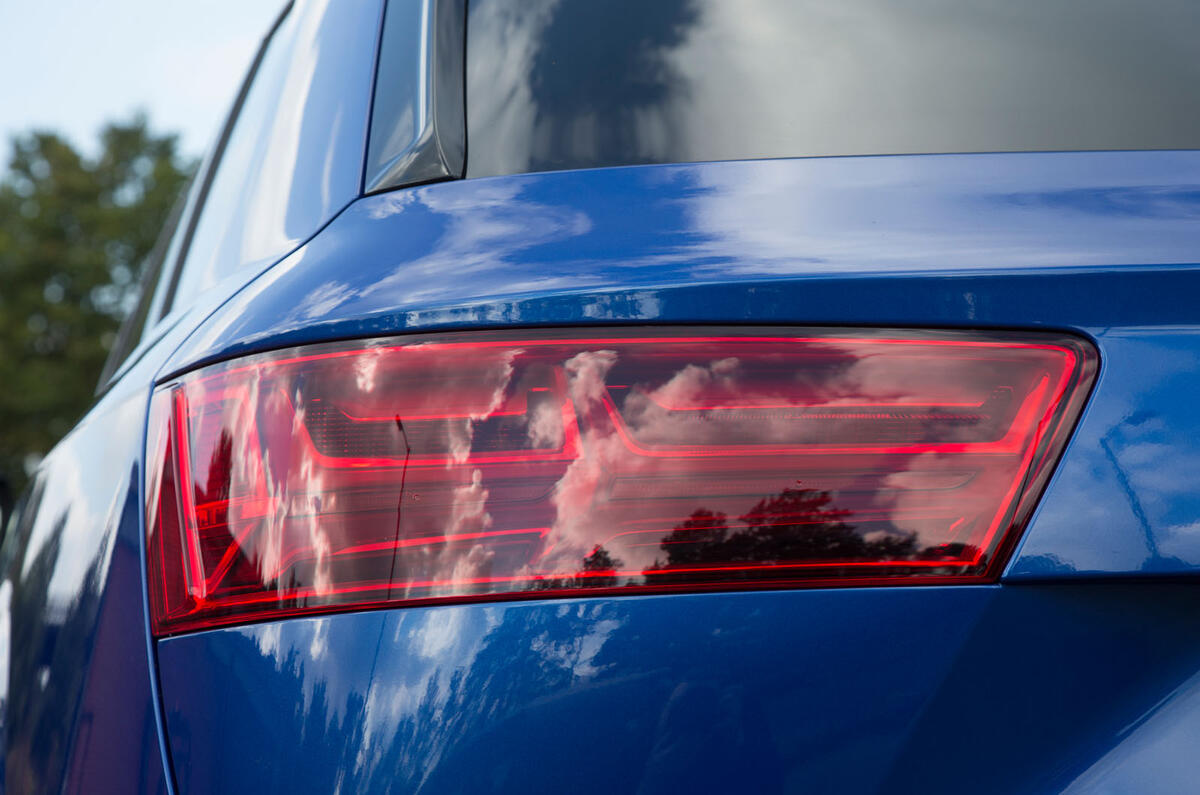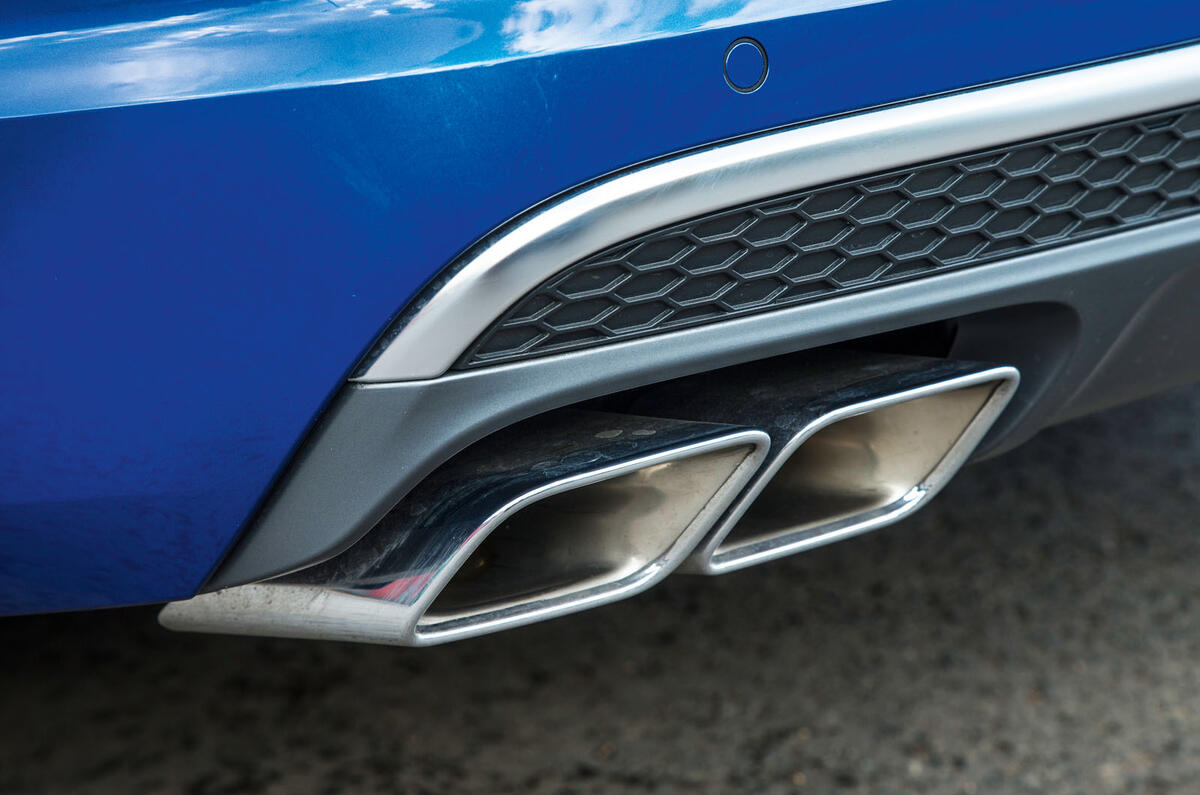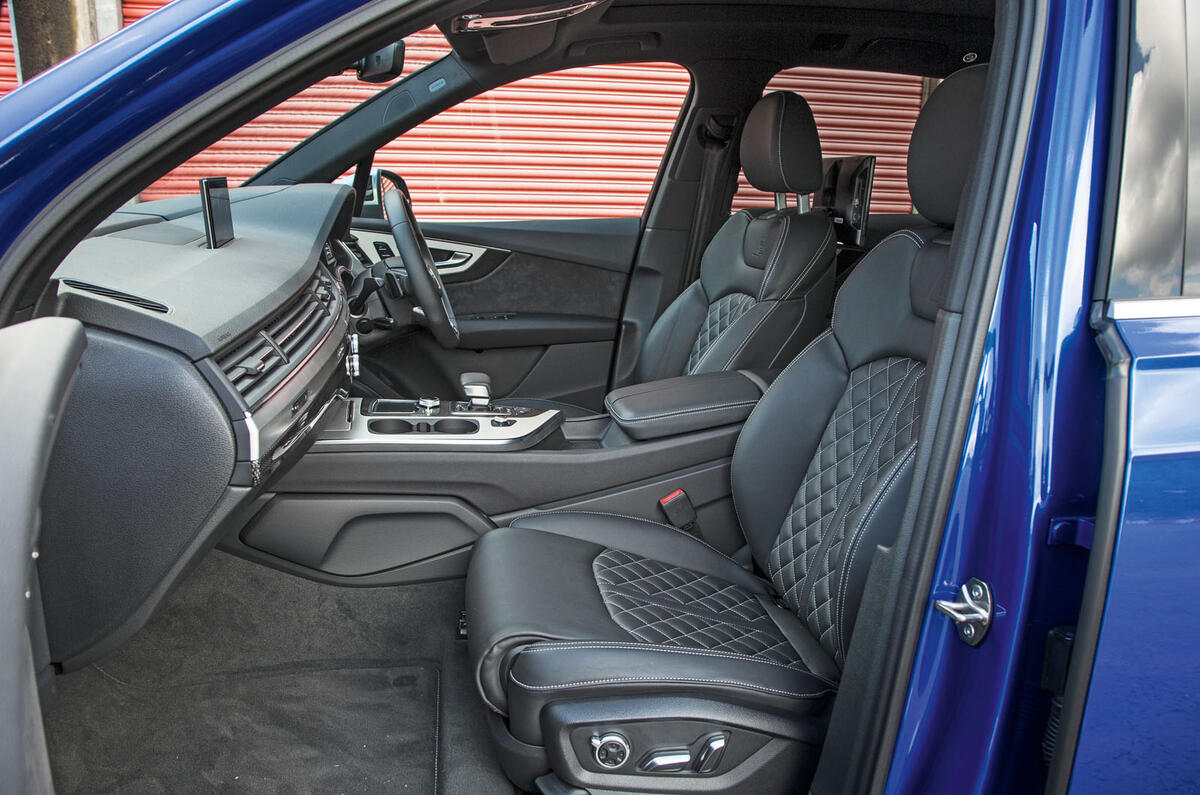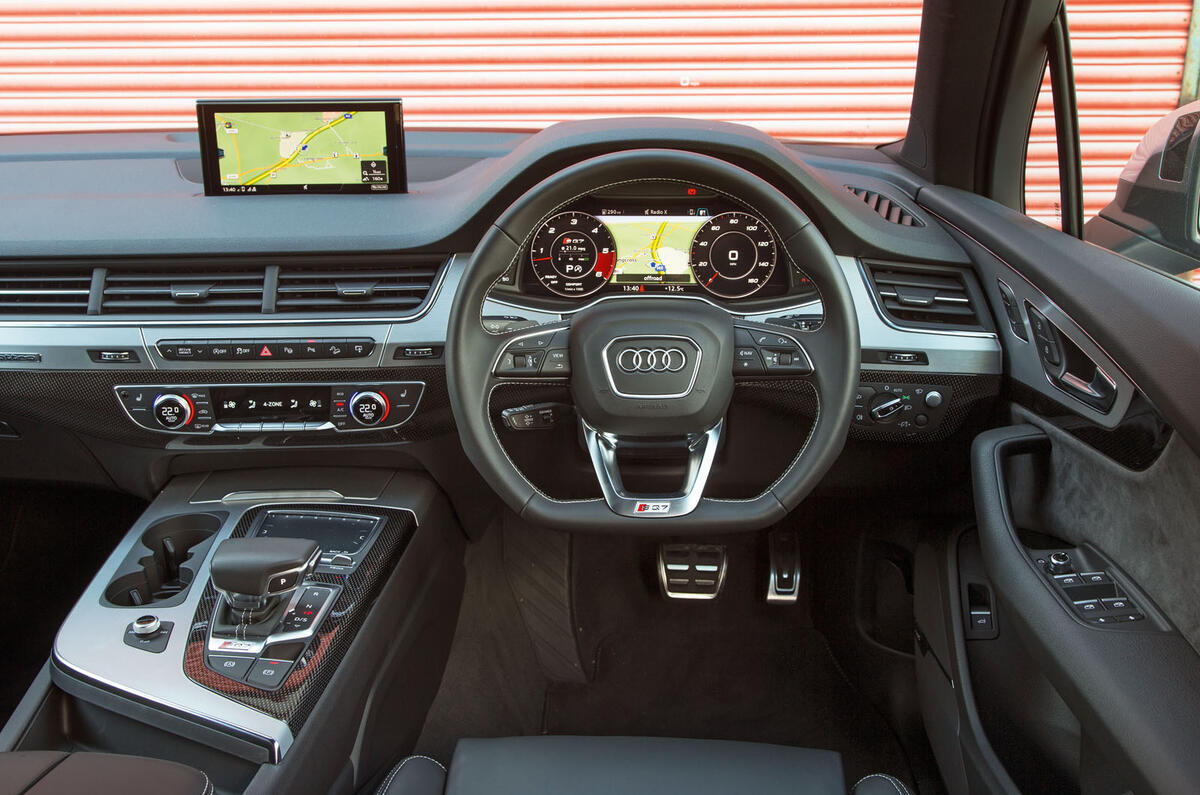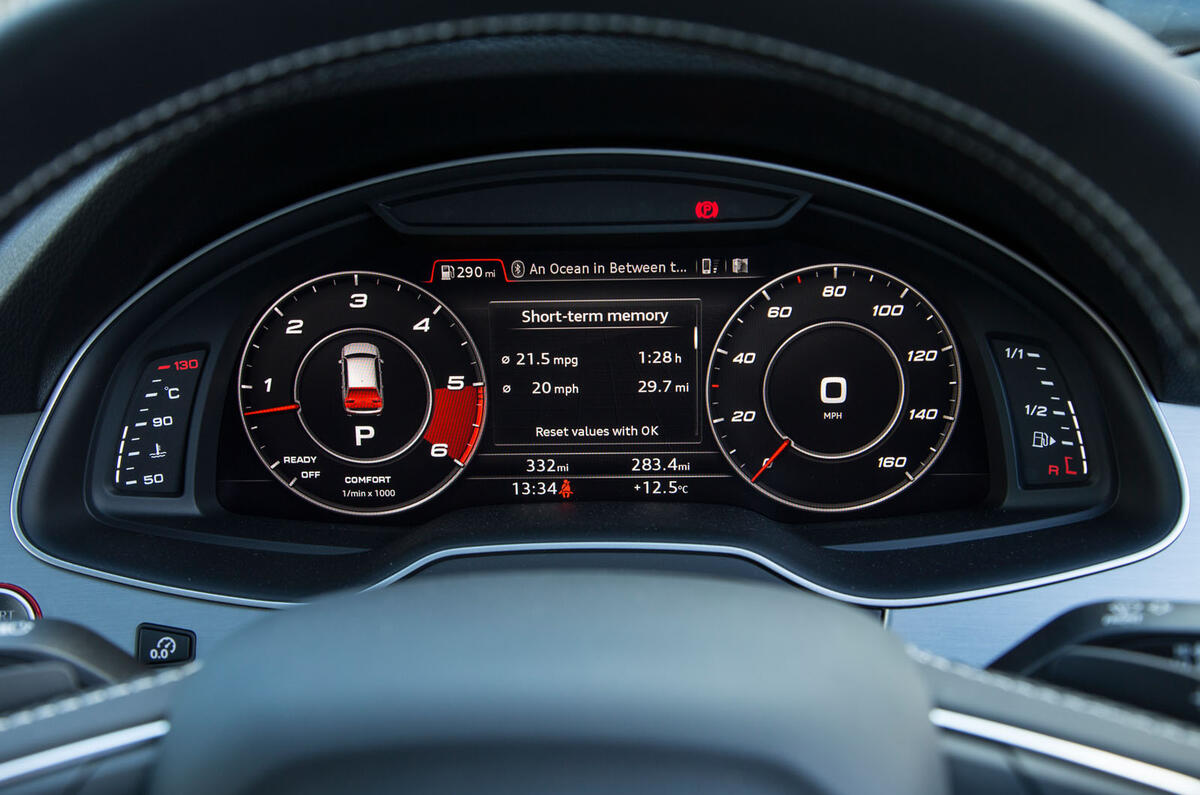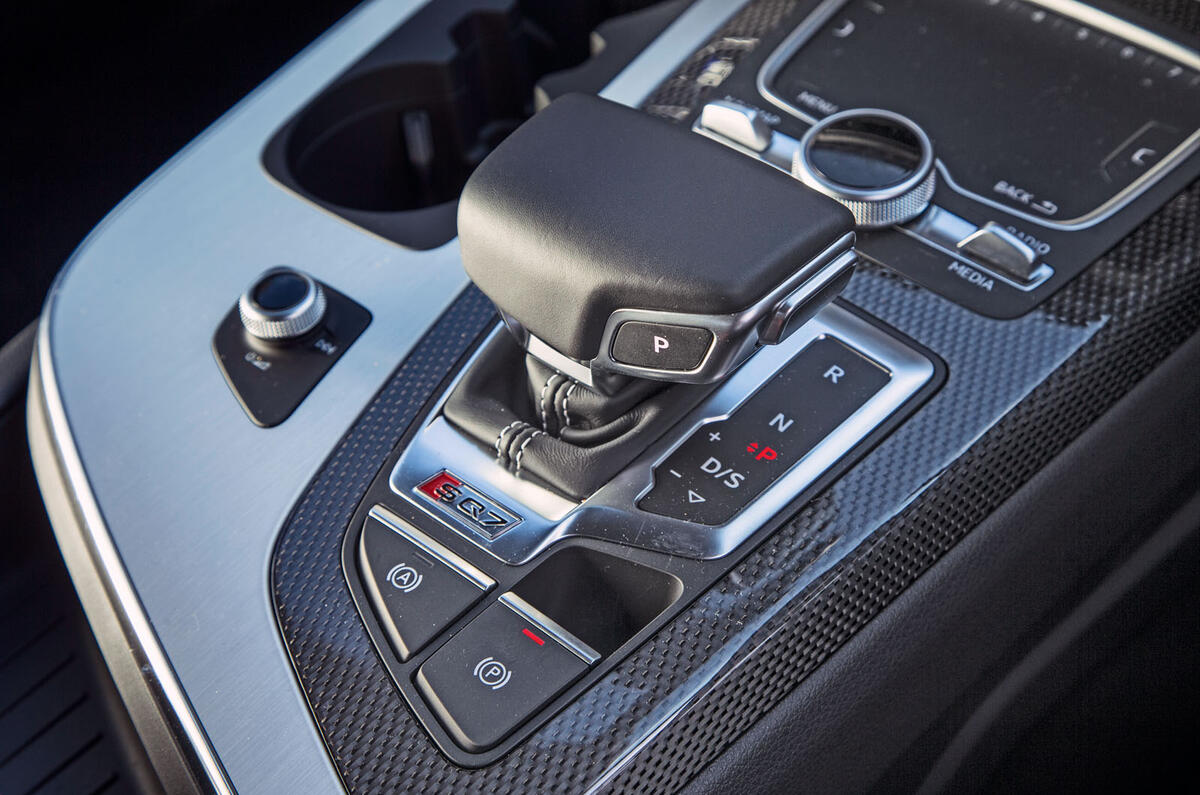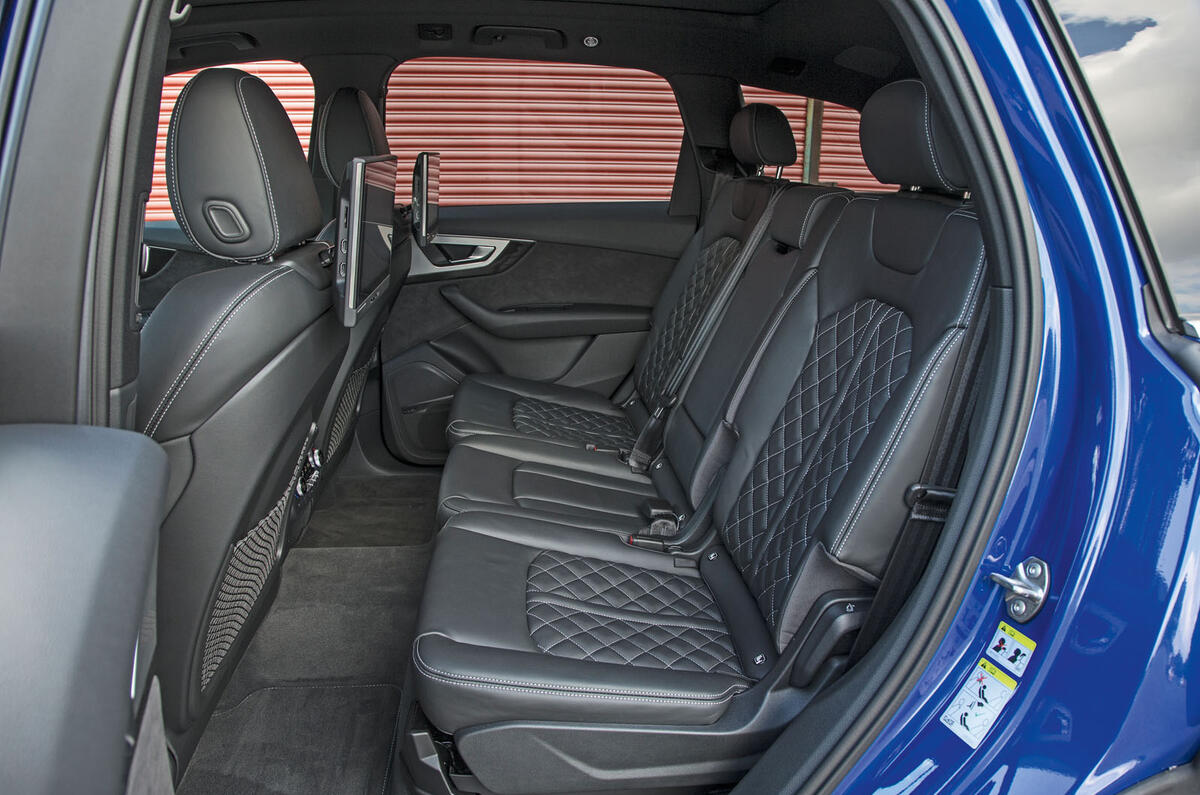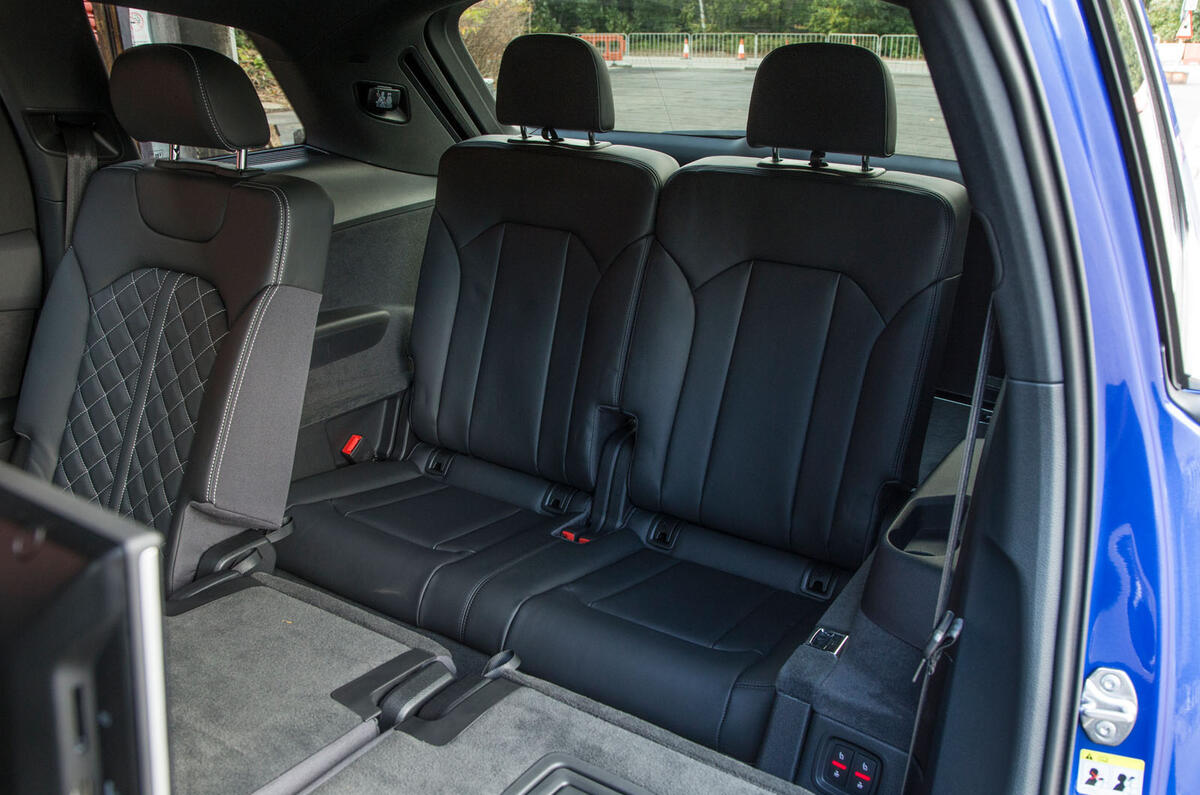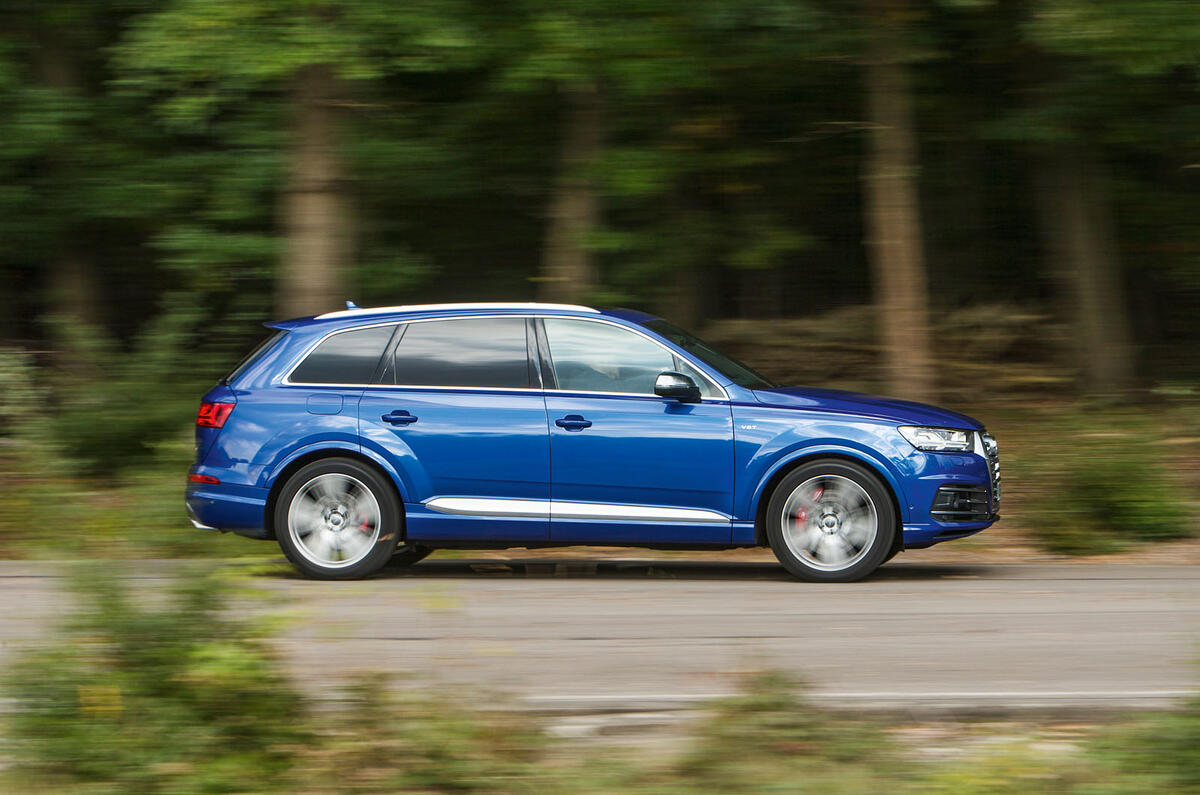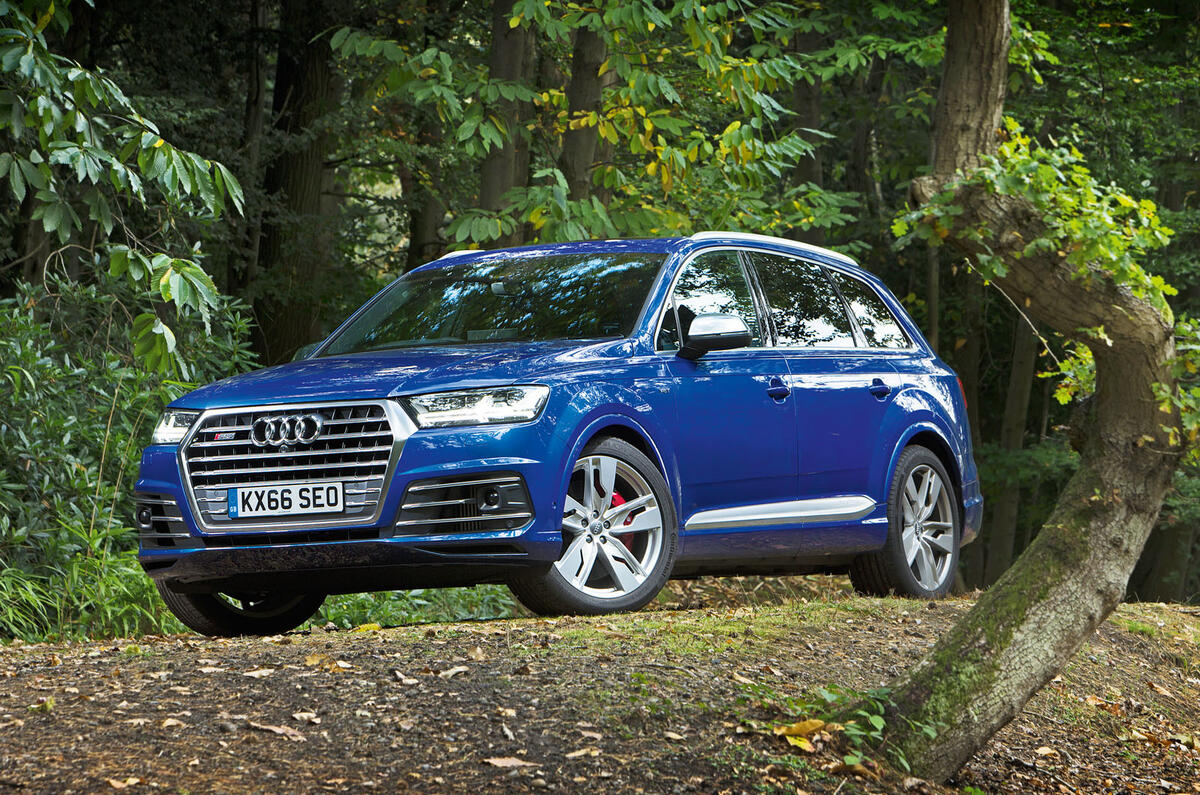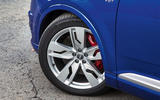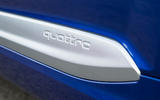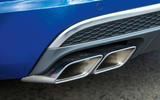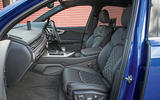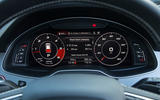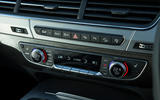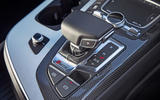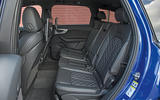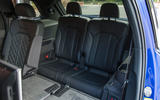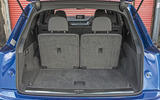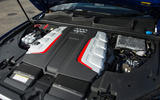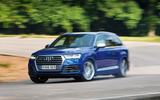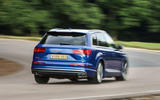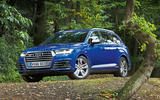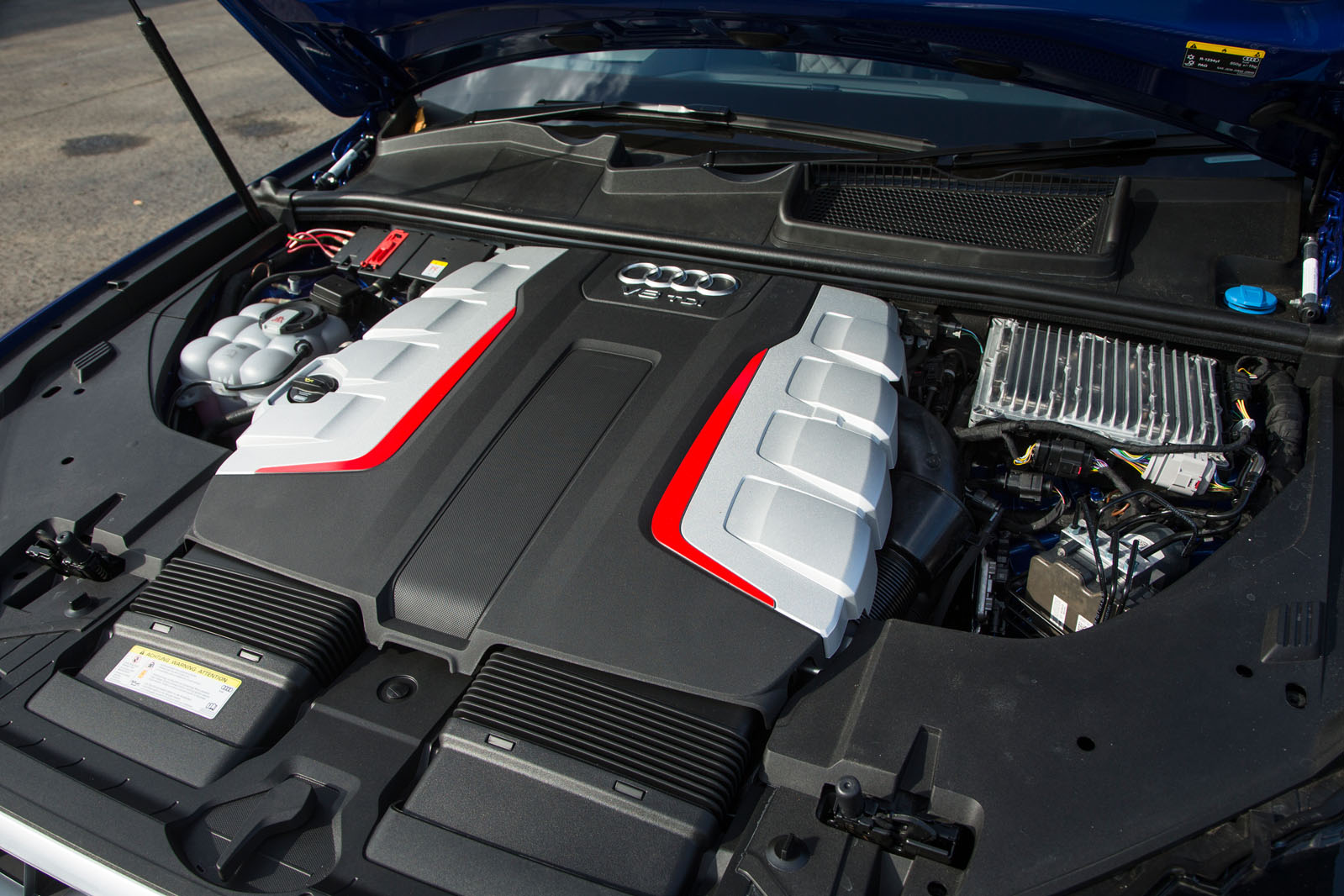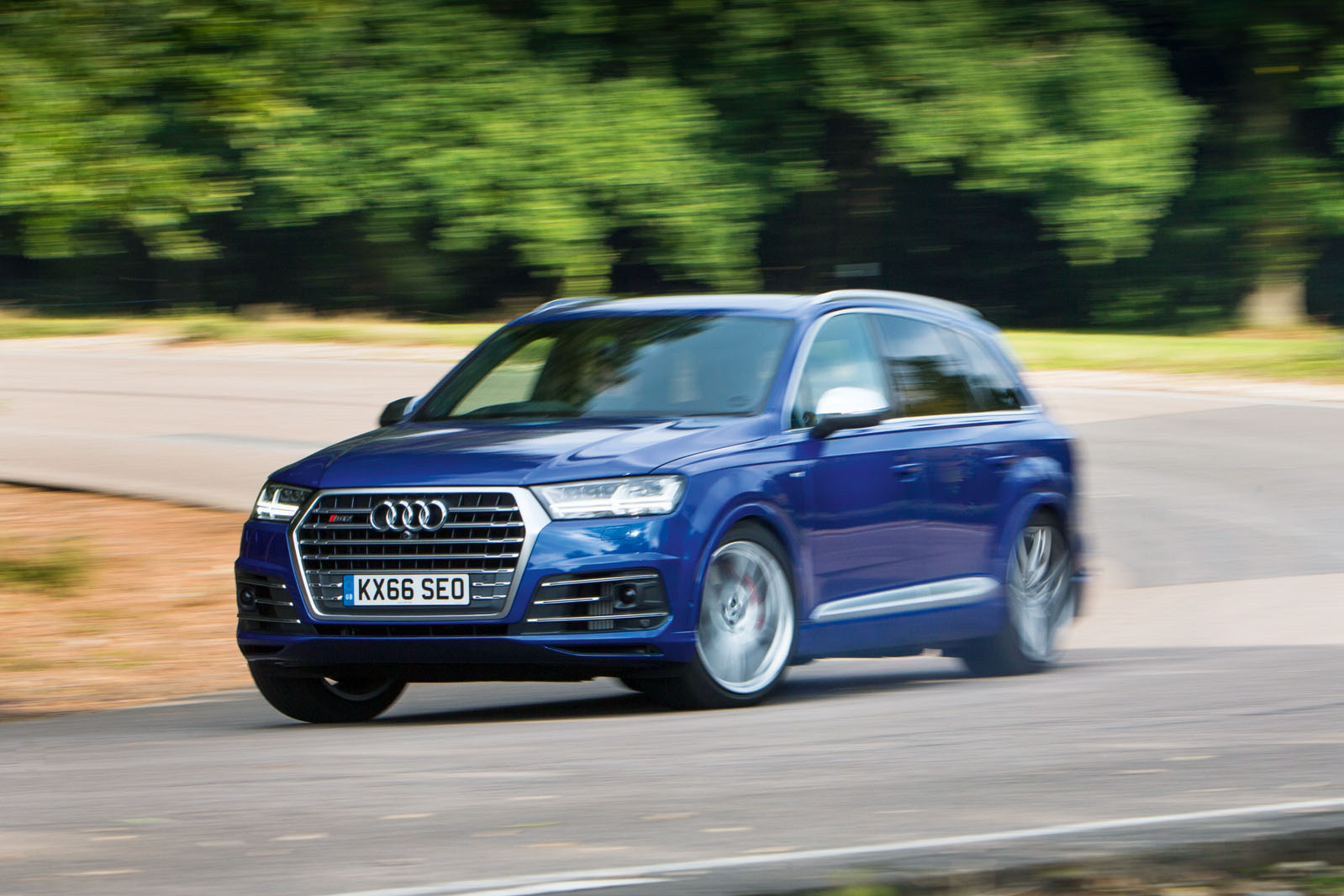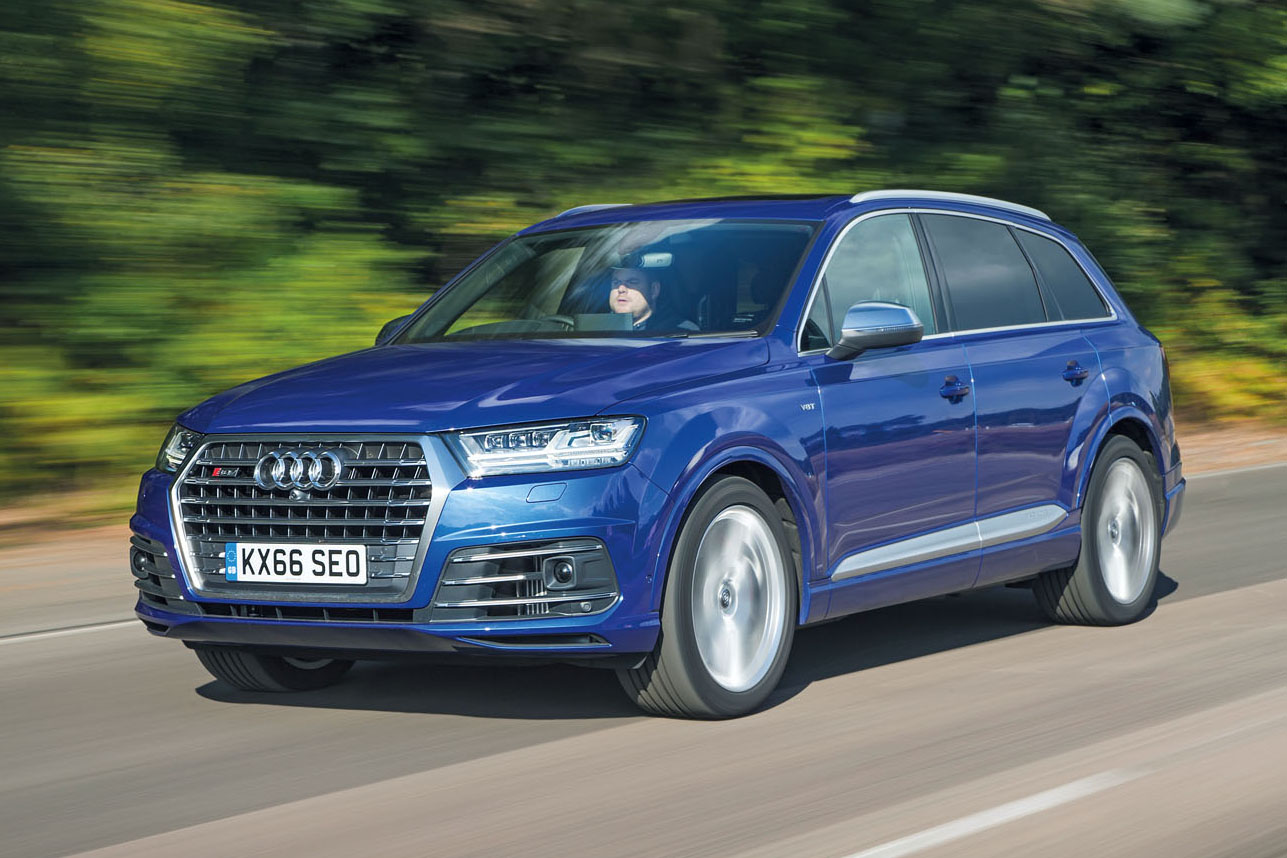From inside, the SQ7 has no problem living up to its price hike.
The model’s supplementary items are modest enough – standard Virtual Cockpit, sportier seats, leather upholstery, some badges – but serve as the glaze atop an already conspicuously plump cherry.
Its dashboard is less overbearing than those adorning the Range Rover Sport and the Porsche Cayenne, but the brushed metal and peerless finish of the Audi can nevertheless consider itself the equal of any contender – save, perhaps, its Bentley-stitched sibling.
Previously we applauded the Audi Q7 for its capaciousness, too. That accolade still stands, although it’s worth mentioning that the level of additional tech incorporated in this range-topper does have an impact inside.
The requirements of housing that 48V electrical subsystem does mean that the boot floor isn’t quite as deep as it is in the regular Q7, meaning that SQ7 owners will lose around 60-65 litres of capacity, no matter which seating configuration they choose.
That isn’t a prohibitive loss, but it’s worth thinking about if load space is regularly going to be at a premium.
Where the new engine architecture makes practically no dent is in the Q7’s highly regarded refinement. So well insulated is its seal from the outside world that the cabin almost seems pressurised; the 65dB it recorded at 70mph is usually the amount of noise you’d expect from a decently hushed car at 50mph.
By default, that V8 engine is that ideal presence: a distant but dauntless hum and the warp drive to the SQ7’s space-age Virtual Cockpit.
Should you wish to hear it, though, you can. In Dynamic mode, the V8’s warble migrates from a whisper-soft throb to a faraway bellow under throttle. It’s aided by a symposer but plainly not generated by one.
For an oil-burner, it is about as evocative as they come and ties a very neat, desirable bow on this luxury SUV’s technocrat ambience.
Getting Audi’s 12.3in Virtual Cockpit as standard is a sensible upgrade for the SQ7, but the car’s embedded SIM card, which delivers internet-based services without you going to the trouble of sourcing a data-only chip yourself, is at least as welcome.
You get free data for three months at the point of purchase, but if you stump up for the Technology Pack (a £1400 option that adds a wireless smartphone connection, inductive charging and a head-up display), you get three years’ worth thrown in.
With Audi Connect, the Virtual Cockpit offers Google Earth and Google Street View, news, weather and traffic plus other entertainment options.
With the myCarManager package, there’s roadside assistance at the touch of a button and, via the Audi MMI app, the ability to fiddle with the door locks and lights from your phone, should you feel the need.
The standard stereo is fine, but there are two 3D surround systems on the option list: a 19-speaker Bose set-up and a Bang & Olufsen alternative that promises to fill the SQ7 with up to 1920W of musical heft.



